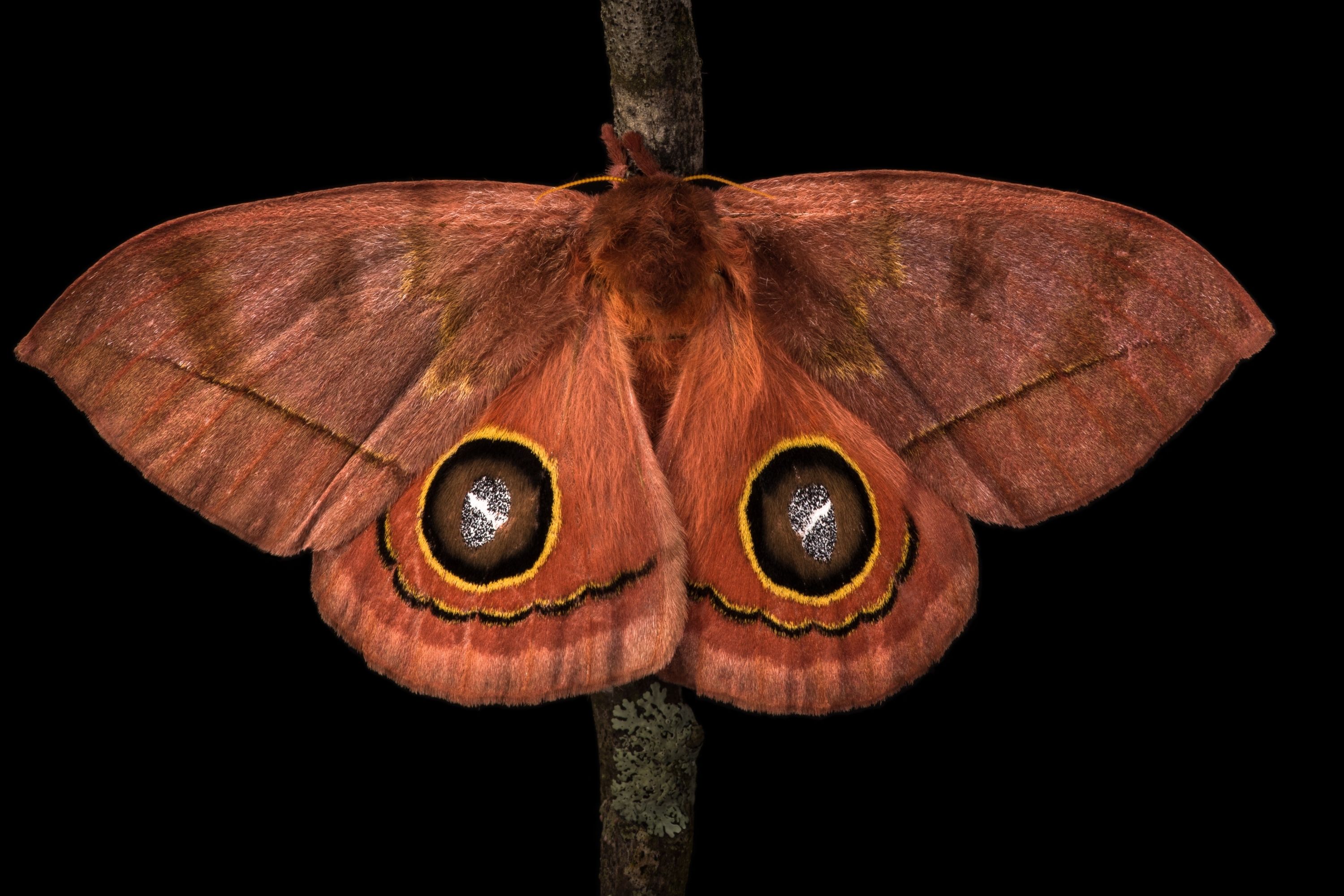Io moth
(Automeris io)

Description
Automeris io, the Io moth (EYE-oh) or peacock moth, is a colorful North American moth in the family Saturniidae. The io moth is also a member of the subfamily Hemileucinae. The name Io comes from Greek mythology in which Io was a mortal lover of Zeus. The Io moth ranges from the southeast corner of Manitoba and in the southern extremes of Ontario, Quebec, New Brunswick and Nova Scotia in Canada, and in the US it is found from Montana, North Dakota, South Dakota, Nebraska, Colorado, New Mexico, Texas, Utah, east of those states and down to the southern end of Florida. The species was first described by Johan Christian Fabricius in 1775. Imagines (sexually mature, reproductive stage) have a wingspan of 2.5–3.5 inches (63–88 mm). This species is sexually dimorphic, males having bright yellow forewings, body, and legs, while females have reddish-brown to purple forewings, body, and legs. The males also have much bigger plumose (feathery) antennae than the females. Both males and females have one big black to bluish eyespot with some white in the center, on each hindwing. Some hybridizations have resulted in variations in these hindwing eyespots. Adults live 1–2 weeks. Many species of flies (Tachinidae) and wasps (Ichneumonidae and Braconidae) are known parasitoids. The flies: the introduced Compsilura concinnata, Lespesia sabroskyi, Chetogena claripennis, Carcelia formosa, Sisyropa eudryae, Lespesia frenchii, and Nilea dimmocki. The Ichneumonidae wasps: Hyposoter fugitivus and Enicospilus americanus. Then the Braconidae wasps: Cotesia electrae and Cotesia hemileucae. Io moths have many predators. These include birds, small mammals, and spiders. Stinging spines of caterpillar Io moths have a very painful venom that is released with the slightest touch; a condition known as erucism. There are two hypotheses regarding where this venom originates: (1) the glandular cells on the base of the branched seta or (2) from the secretory epithelial cells. Contacting the seta is not life-threatening for humans, but still causes irritation to the dermal tissue, thought to result in a stinging sensation. Both male and female adult io moths utilize their hindwing eyespots in predatory defense when the moth is sitting in the head-down position or is touched, via shaking and exposing these eyespots.
Taxonomic tree:







